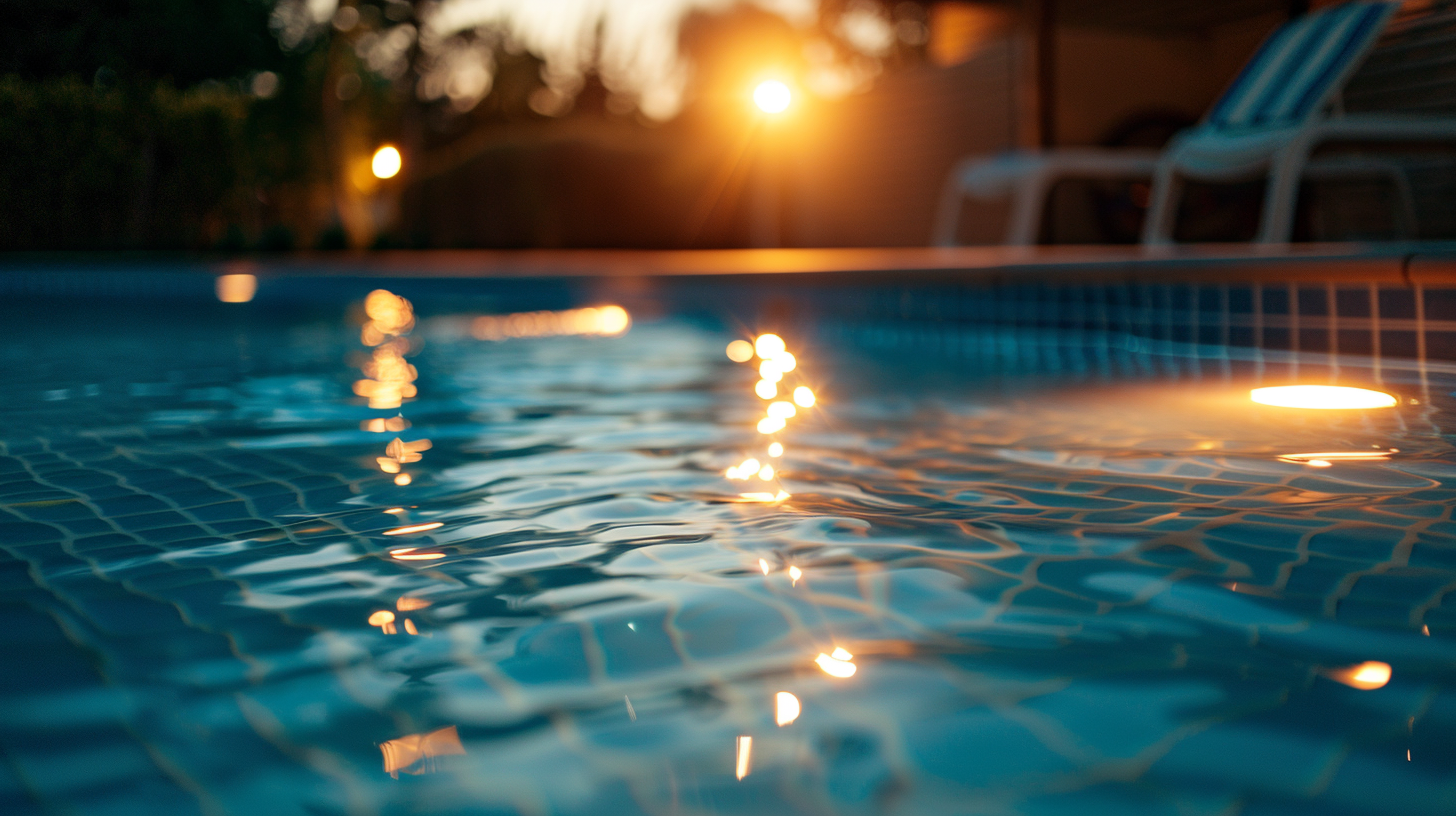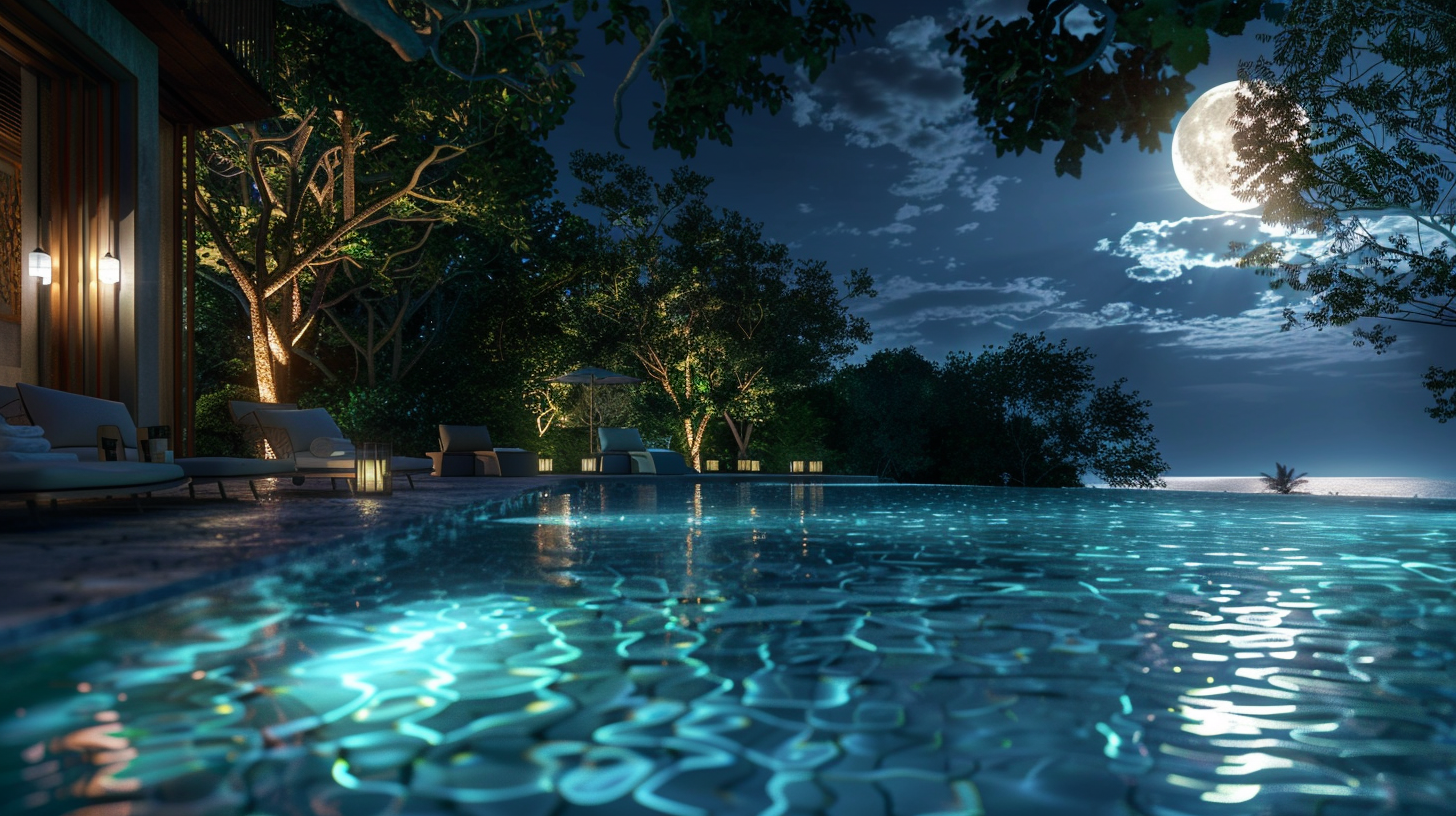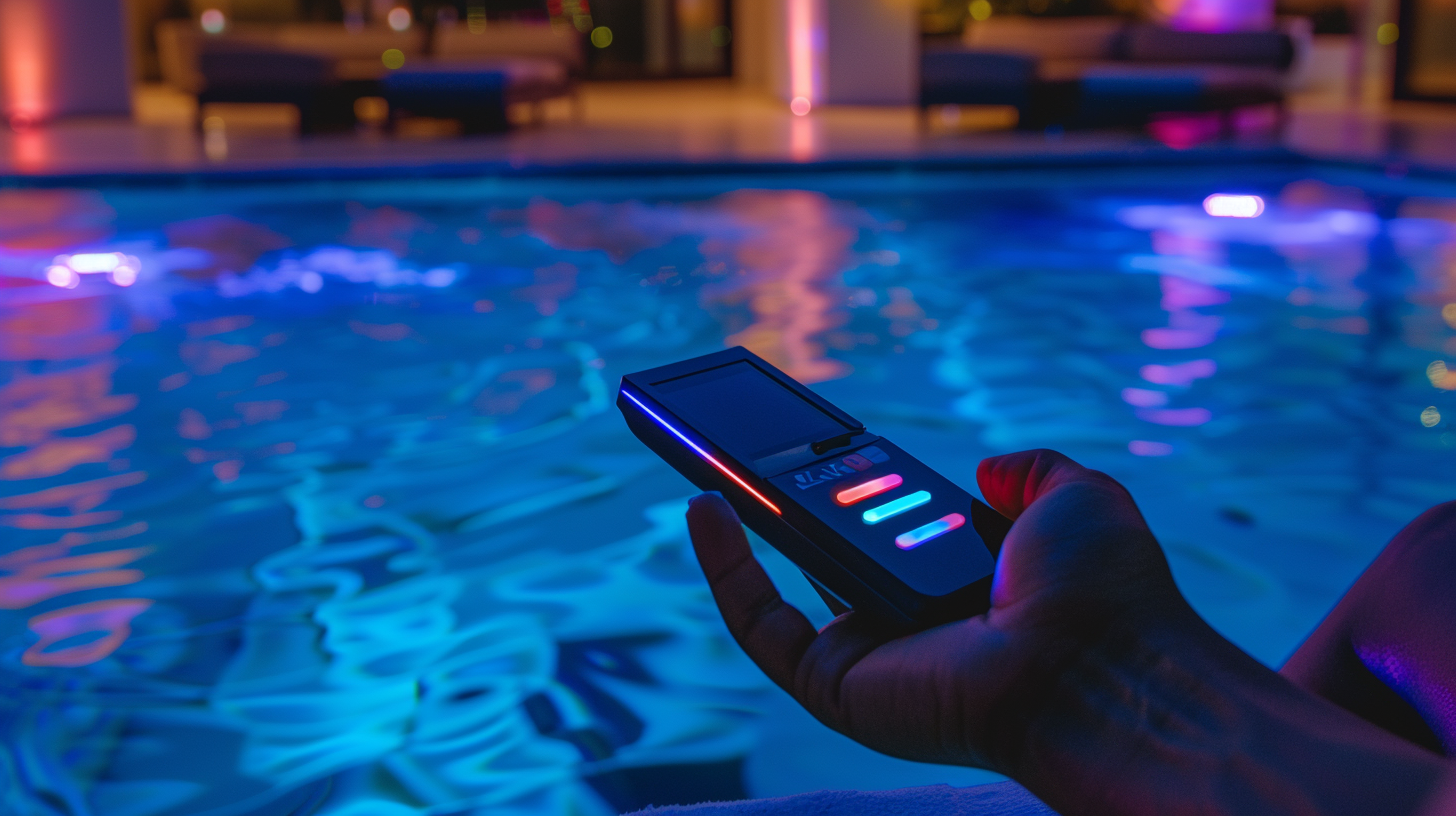The cost of underwater pool lights: what to expect
Before diving into the world of underwater pool lights, it’s crucial to have a grasp on the basic costs you’ll encounter. Generally, the price of pool lights ranges widely depending on various factors, but you can expect to start at around $100 for simpler models. These basic units typically include a standard white LED bulb and can go up to $300 or more for advanced options featuring color-changing capabilities and remote controls.
Another critical aspect of pool light costs is the initial purchase versus long-term savings. While a basic setup might seem inexpensive initially, investing in higher-quality lights can be more cost-effective over time due to their superior durability and lower energy consumption. It’s important to factor these elements into your budget to get a clearer picture of overall expenses.
Additionally, be mindful of other associated costs such as protective covers or extra cables required for installation, which might not be included in your initial purchase. Understanding the basic costs will equip you better in making an informed decision and ensure your pool stays illuminated without breaking the bank.
Factors affecting price variations
While understanding the basic costs provides a good starting point, it’s equally important to delve into the factors that cause price variations. One primary determinant is the type of bulb used in underwater pool lights. LED lights, for instance, tend to be more expensive upfront compared to incandescent or halogen bulbs. However, LEDs offer advantages such as longer lifespans and lower energy consumption, which can result in significant savings down the line.
Another factor that greatly impacts cost is the brand and quality of the pool lights. Premium brands usually come with higher price tags, but they often offer enhanced features such as advanced color-changing capabilities, integrated smart-home functionality, and extended warranties. These features can enhance your pool experience and provide peace of mind, knowing that you’re investing in a reliable product.
Geographical location can also play a role in price variations. Shipping costs, regional availability, and local market conditions can influence the final price you pay for pool lights. For instance, if certain brands or models are scarce in your area, you might end up paying a premium for them, either due to shipping fees or simply due to higher demand.
The complexity of the lighting system is another critical factor that affects cost. Basic single-color lights are generally cheaper, while multi-color or programmable lights, which offer more flexibility and aesthetic appeal, can be more expensive. Some high-end systems even come with customizable options that allow you to set specific lighting patterns and sequences, adding a touch of sophistication to your pool setup.
Lastly, consider the added bells and whistles. Many modern pool lights come with remote controls, smartphone apps, or even voice-activated features. While these extras can significantly enhance your user experience, they also contribute to the overall cost. Weighing these factors against your budget and desired outcomes will help you make an informed decision on what to expect when purchasing underwater pool lights.
Energy efficiency and long-term savings
One of the most overlooked but critical aspects when evaluating underwater pool lights is their energy efficiency and how it contributes to long-term savings. Modern pool lights, especially those using LED technology, offer a significant advantage over their traditional incandescent or halogen counterparts. Although the initial cost of LED pool lights might be higher, their energy efficiency can lead to substantial savings on your electricity bills over time. To put it into perspective, LEDs consume up to 80% less energy than incandescent bulbs while providing the same, if not better, lighting. This means that the added upfront cost can be offset by the reduced energy consumption over the life of the lights.
But energy efficiency isn’t just about slashing your electricity bills. For those keen on reducing their environmental footprint, opting for energy-efficient pool lights is a step in the right direction. LED lights generate less heat and last significantly longer than traditional bulbs, which means fewer replacements and less waste. Depending on the specific model and usage, some LED pool lights can last up to 50,000 hours, far surpassing the 1,000-hour lifespan of a typical incandescent bulb. This longevity translates into fewer purchases and less frequent disposal of old lights, making it a more sustainable choice.
Long-term savings also come from reduced maintenance costs. High-quality LED pool lights are designed to be more durable and resistant to elements such as water and pool chemicals. This resilient design means less frequent maintenance and fewer instances of light failure. LED lights are often encased in robust, waterproof housings that protect them from potential damage, thereby extending their lifespan and reducing the likelihood of costly repairs or replacements.
Moreover, many energy-efficient pool lights come equipped with smart features allowing for even greater savings. With programmable settings and remote controls, you can optimize when and how your pool lights operate, ensuring they’re only on when needed. Some advanced systems can be controlled via smartphone apps, enabling you to monitor and adjust the lights remotely. By automating your lighting schedule, you can avoid leaving the lights on by accident and further cut down on energy usage.
Incorporating energy-efficient underwater pool lights into your pool setup is an investment that pays off both financially and environmentally. Whether you’re looking to reduce your energy bills, lower maintenance costs, or make a more eco-friendly choice, these modern solutions offer a range of benefits that contribute to long-term savings. So, when considering what to expect from the cost of pool lights, remember that the initial investment in energy-efficient options can yield significant returns over time.
Installation and maintenance expenses
Expenses associated with installation can vary significantly depending on several factors, including the type of pool lights you’ve chosen, the size and shape of your swimming pool, and the complexity of the installation process. Basic installations for simpler models of underwater pool lights may cost around $200 to $500, mainly if you’re hiring a professional. However, if you’re opting for advanced lighting systems with complex wiring and additional features, these costs can escalate.
When budgeting for your pool lighting project, it’s crucial to account for labor costs. Professional installation is often recommended to ensure the lights are correctly and safely fitted. Given that water and electricity are involved, mistakes can be potentially dangerous and costly. It’s advisable to hire licensed electricians or pool specialists whose prices can range from $50 to $100 per hour, depending on your geographical location and the specific requirements of your installation.
Maintenance expenses are another significant consideration. High-quality LED pool lights are designed to be long-lasting and require minimal maintenance, thanks to their robust construction and resistance to pool chemicals and environmental elements. However, periodic inspections and cleaning are necessary to ensure optimal performance and longevity. On average, annual maintenance costs can be anywhere from $50 to $150, including the price of replacement bulbs and any minor repairs.
Custom-built pools with unique shapes or specific lighting configurations might require specialized installation techniques. For instance, if your pool has irregular contours or features such as waterfalls and fountains, additional labor and custom fixtures might be necessary, thereby driving up costs. In-ground pools are often more expensive to work with than above-ground pools due to the complexities associated with underwater wiring and fixture placements.
Moreover, certain installation scenarios might necessitate additional equipment. For example, installing lights in an older pool may require rewiring or upgrading the existing electrical system to accommodate modern, energy-efficient lighting options. Such upgrades can add several hundred dollars to your installation budget, bringing your total expenses to well over $1,000 in some cases.
Bringing in smart features can also influence costs. Modern pool lights often come with advanced functionalities like remote controls, Wi-Fi connectivity, and automation settings, which could require additional accessories or more complex wiring systems. Integrating these features typically involves higher initial outlays but can provide substantial convenience and flexibility, enhancing your overall pool experience.
Mitigating these costs can be achieved by combining installation with other pool service tasks, such as resurfacing or regular maintenance, ensuring you only need to schedule a professional visit once. Additionally, purchasing high-quality lights that come with extended warranties can reduce the financial impact of potential future repairs or replacements.
Understanding what to expect from the cost of installation and maintenance for underwater pool lights helps in planning a realistic budget. These expenses, though variable, are an essential part of the overall cost of pool ownership and ensuring a visually appealing, safe, and enjoyable swimming environment.
Choosing the right lighting for your pool
As you embark on the journey of illuminating your pool, selecting the appropriate lights is crucial for enhancing both the aesthetics and functionality of your swimming area. The right lighting can transform your pool into a stunning nighttime oasis while providing essential safety features, so it’s important to consider the various options available on the market.
First, think about the type of lighting you prefer. Traditional incandescent lights offer a warm, familiar glow but fall short in terms of energy efficiency and lifespan. Halogen lights are a step up in efficiency and brightness but still lag behind the latest technology. That brings us to LED lights, which have become the go-to choice for many pool owners due to their exceptional energy savings, long life, and vibrant lighting options. These lights can be more expensive initially, but their durability and lower operational costs often make them a worthwhile investment over time.
Next, consider the color and brightness of your pool lights. LED lights are available in various colors, including dynamic color-changing options that can create a mesmerizing, ever-changing ambiance. Some LED systems even come with remote controls or smartphone apps, allowing you to customize your pool’s lighting at the touch of a button. Whether you want a calm blue hue for a serene evening swim or vibrant multicolors for a lively pool party, the choices are virtually endless.
Additionally, the placement of your pool lights is a critical factor to think about. Strategically placed lights can highlight particular areas of your pool, such as steps, water features, or the deeper end, enhancing both the look and safety of your swimming area. Some pool lighting systems are designed for specific placements, such as wall-mounted fixtures or floating lights, giving you ample flexibility in your lighting design.
Another consideration is the complexity of the lighting system. Simpler systems with single-color lights are generally easier to install and maintain, making them a good choice for budget-conscious pool owners or those with fewer technical skills. On the other hand, more sophisticated systems with programmable settings and automated features can offer a premium lighting experience but may require professional installation and additional maintenance.
Furthermore, take into account the build quality and warranty of the pool lights you choose. High-quality, well-constructed lights are crucial for withstanding the harsh conditions they will face, such as exposure to water, chlorine, and varying temperatures. Opting for trusted brands that offer extended warranties can provide peace of mind, knowing your investment is protected for years to come.
Finally, don’t forget to factor in your overall outdoor and pool design. The lighting you choose should complement the existing landscape and architectural elements, creating a cohesive and visually appealing outdoor space. Whether your style leans toward modern minimalism or lush, tropical vibes, there’s a lighting solution to match your vision.
Selecting the right pool lights involves balancing several factors, from initial cost and energy efficiency to aesthetic preferences and installation complexity. By carefully considering these elements, you can make an informed decision that not only meets your needs but also enhances your swimming experience, turning your pool into a captivating and safe nighttime sanctuary.


